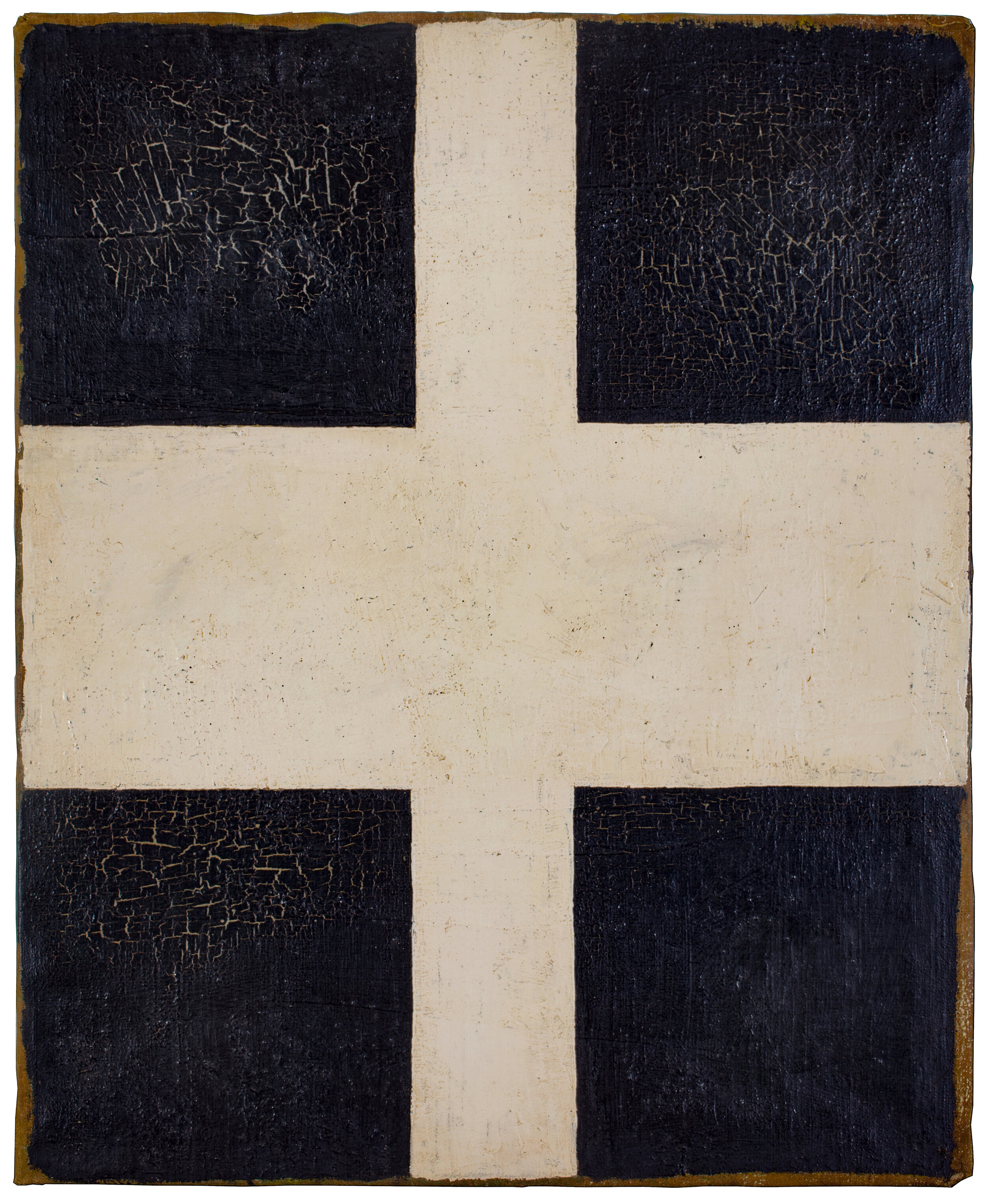I FOUND MALEVICH
“When you raise the dead, they bring their baggage.”
- William Gibson
“Look,” I bent down and picked up a rock. “A stone tool,” I said, holding the palm-sized rock out to show my wife. I gripped the fractured stone against the pad of my hand. My wife looked at me skeptically as I handed it to her. “What makes you think it’s a tool?” she asked.
“Feel it,” I said, “feel the way it fits in your hand, look at the cleaving along the edge.” Fractured along one side, the pattern, created by percussion strikes, meant that it likely had been shaped thousands of years ago by human hands.
“Look around,” I said, gesturing to the ground, “All of the other stones here are soft and weathered. This is an outlier, and besides that, look where we are.” We looked up and scanned the vast open ocean of the Great Plains. “This spot would have been a perfect place to keep an eye out for game. From here, you can see forever.” From the tiny hill where we were standing, the undulating surface of the earth went on for miles in all directions. To the West, the vast spine of the Rocky Mountains, to the East, hundreds of miles of this same emptiness. Looking South, one could barely make out the tip of Pikes Peak poking over the horizon. Whether due to a rise of the land, or the curvature of the earth, the fourteen thousand foot mountain barely made its way into view on this crystal clear day, playing peek-a-boo from a hundred miles away.
Holding the stone in her hand, I asked, ”Do you feel it?” Her skepticism seemed to melt away as she cradled the rock in her palm, then moving her arm in a hammering motion. “See,” I said, “Who knows, maybe it was fashioned here on this very spot thousands of years ago. It may have been used to crack bones to extract the marrow.”
We separated, both scanning the sandy soil for more clues to a lost past. “I think I’ve found something!” my wife called from a hundred feet away.
The tires of the FedEx truck made a crunching noise as they rolled across the frozen slush, squeaking brakes, then the hiss of the air-break. It was a frigid, moonless mid-December night. The package made its way towards our front door, the driver’s flashlight a beacon heralding the arrival of yet another painting from Aachen, Germany.
This shipment was special. For the past three months, I’d been working with my brother and his friend Brad, divvying-up the offerings made to us by the mysterious German seller. Ever since we’d received the thumbs-up from an art conservator that the paintings we’d purchased from him were without question genuine, period works, we’d made a pact to pool our resources and attempt to acquire every work the seller offered.
Two weeks earlier, over my morning coffee, I’d stared in disbelief at my computer screen, looking at what appeared to be a painting by the Russian artist Kasimir Malevich. Now here it was, sitting in my doorway. My palms were sweaty with anticipation as I signed the waybill.
I’d told my brother over the phone, “If the paintings arrive, and they’re too perfect, they’re wrong.” I’d seen an extensive exhibit of Russian avant-garde art in the mid-1980s, where I was struck by the immediacy and provisional nature of much of the work. These artists were poor. They were pioneers and explorers of new forms, desperate to make their ideas visible. Their work almost always had a strong sense of urgency.
I’d become aware of Malevich’s work as an undergraduate art history student. His theories, steeped in an arcane mysticism, had baffled and compelled me; the thousand-yard stare of his Black Square, his colorful and weightless geometric forms, his embrace of complete formal abstraction as poetic nothingness. He’d singlehandedly created an entire twentieth-century art movement called Suprematism. His legend cut a wide swath through the spiritually-oriented sector of the art world. As one of the many artists, poets and intellectuals who were censored under Stalin’s repressive totalitarian regime, his surviving works were few and far between. The vast majority of his life output, it was assumed, was either lost or destroyed.
Using a box cutter, I began the delicate task of extracting the painting from its chrysalis of bubble wrap and tape. At first glance, the edge of the canvas appeared, weathered with grime, possibly from years of dank storage. The wooden strainer that supported the canvas was painted a dirty white and was clearly very old. Slipping the painting slowly out of its plastic cocoon, it revealed itself. My first impression was of a relic or ancient talisman. I placed the painting on a shelf and stood back. Its occult presence seemed to envelop the entire house. It wasn’t just me who was experiencing this; my wife felt it too. We stood side by side, she covered her mouth, shaking her head, and turned away. “You’re not keeping that painting in this house. That thing gives me goosebumps.”
Unattributed. Unsigned. In the style of Kasimir Malevich. Oil on canvas. 60 x 50.5 cm.





